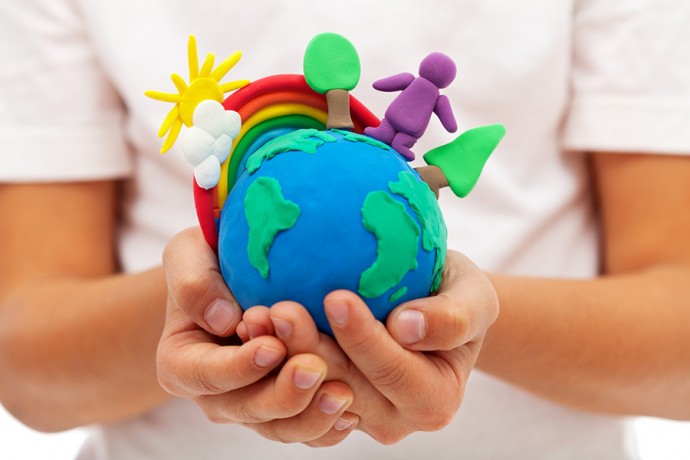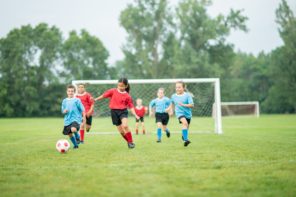Protecting a child from harm is an instinct basic to human nature. We teach our children to be careful—not to play with matches, to look both ways before crossing the street and to wash their hands when they come in from playing outside.
We feed them healthy food and ensure they get plenty of rest. Whether it’s our own child or someone else’s, we don’t hesitate to reach a hand out to prevent a child from walking into traffic or to pick up and comfort one who is hurt and crying.
In schools, we also do our best to protect children from the risks of accidents, fire and infectious diseases—as well as drugs, alcohol, bullies and cyber predators. Efforts in these areas are important and laudable, but not all threats to children’s health and safety can be seen.
“School is a child’s workplace,” says Dr. Joel Forman, associate professor of pediatrics and community and preventive medicine at the Mount Sinai School of Medicine in New York City. “The counterpart to adult occupational medicine is pediatric medicine focusing on the school environment.”
Children are uniquely vulnerable to chemical insults due to their small, developing bodies and typical childlike behavior. They have immature immune, detoxification and elimination systems, and pound for pound, they take in more contaminants than adults. Children also typically sprawl on desks and floors, roll in the grass and engage in hand to mouth behavior—they’re kids—they rarely sit still and they like to have fun touching everything!
Childhood illnesses and disabilities, including asthma, cancer, diabetes, neurological and behavioral problems and endocrine disruption are increasingly linked to environmental exposures. Statistics show these health impacts are growing in incidence across the country, and as a result, scientists and medical experts are beginning to focus more closely on exposures commonly found in schools.
Three chronic, low-level chemical exposures found in schools are raising concerns among child health advocates:
- Diesel exhaust from idling school buses
- Pesticides used on playing fields
- Petrochemicals used in institutional cleaning products.
Some states have passed legislation or adopted regulations to address these exposures that are commonly found in schools. New York State, for instance, prohibits the use of pesticides on school grounds, and its Department of Education has issued a regulation prohibiting vehicle idling. However, too often, state laws and regulations designed to protect children are weakened due to industry pressure.

Patrick Pizzo of East Meadow Public Schools (R) discusses green cleaning procedures with Barnum Woods Elem0entary School head custodian Oniz Ruiz.
As a result, some parent groups and school districts are taking a proactive stance to ensure the safety of students in their schools. In East Meadow, N.Y.—one of the state’s largest school districts—Special Assistant to the Superintendent, Patrick Pizzo, oversees all buildings and grounds.
“My primary responsibility is the health and safety of our students, our teachers and our staff,” says Pizzo. “That’s why you won’t find any petrochemicals in our cleaning products, or any idling of vehicles on school grounds. We haven’t used toxic pesticides on our fields for more than 10 years, and they look great!”
So how can parents help make their child’s school as safe as possible? One solution is The ChildSafe School, which is offered by Grassroots Environmental Education—a science-based non-profit organization. This grassroots advocacy program is designed to help parents understand the issues and bring about lasting change in their child’s school.
“School is a child’s second home, so it’s critical that school environments are as safe as they can possibly be,” says Patricia Wood, executive director of Grassroots Environmental Education. “The ChildSafe School is a step-by-step, policy-based program that helps parents, teachers and administrators take an active role in reducing toxins that we know can negatively impact children’s health.”
Based on emerging science—and backed by a scientific advisory board that includes experts from Harvard and Yale Universities, the University at Albany and Mount Sinai Medical Center—the ChildSafe School program includes films, Q&A sheets for parents, research abstracts and a checklist for parents and other child advocates to help guide them through the process.
“We’ll never have 100% certainty that a particular exposure has caused an injury or illness, but we have a responsibility to our children to prevent an unnatural experiment from occurring,” says Dr. Leo Trasande, pediatrician and associate professor at New York University’s School of Medicine.
“By taking steps to reduce chemical exposures in schools through grassroots initiatives like The ChildSafe School, we can make a wise investment in the future of our children.”
Childhood Illnesses By the Numbers
- Asthma is one of the leading causes of school absences and emergency room visits, accounting for an annual loss of more than 10.5 million school days per year.
- Attention Deficit Hyperactivity Disorder (ADHD) has been diagnosed in approximately 6.4 million children 4-17 years of age.
- Childhood cancer, although relatively rare, is the leading cause of disease-related death among children in New York from infancy to age 15. Nationwide, children’s cancer rates have been slowly trending upward since 1975.
- A recent government survey indicates that one in every 50 school children ages 6-17 have autism spectrum disorder (ASD). ASD occurs in all racial, ethnic and socioeconomic groups, but is almost five times more common among boys than girls.
- Birth defects affect one in every 33 babies. Birth defects are one of the leading causes of infant deaths, accounting for more than 20% of all infant deaths.
Doug Wood is the associate director of Grassroots Environmental Education, a non-profit organization based in New York.





